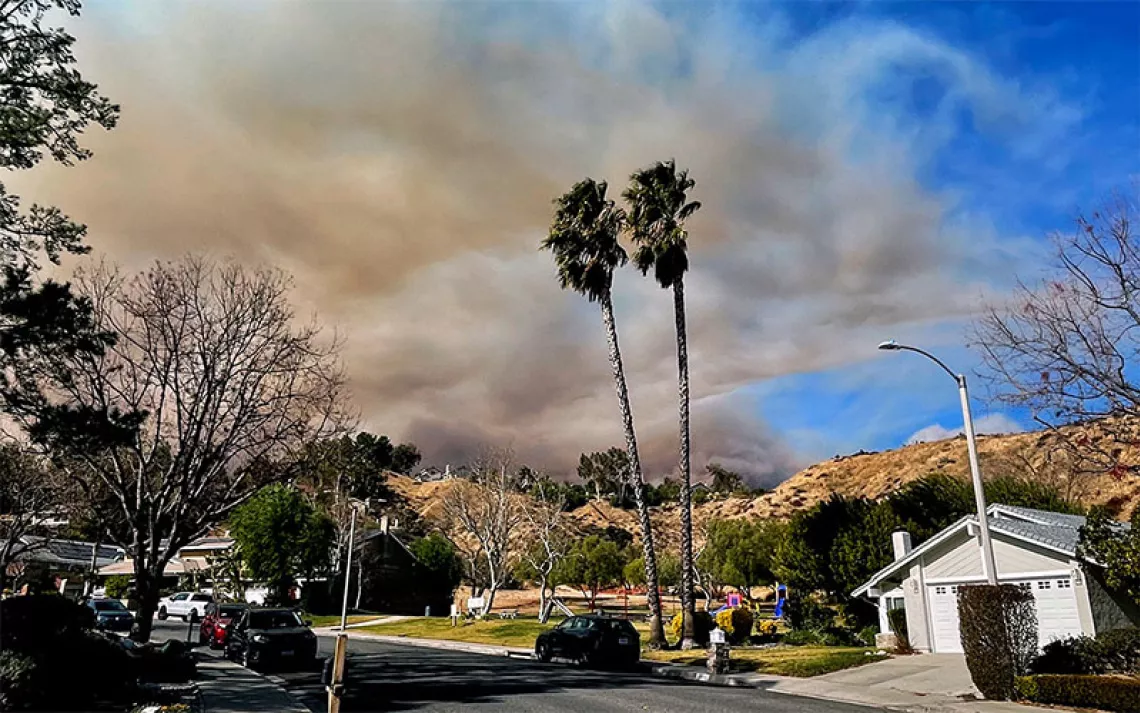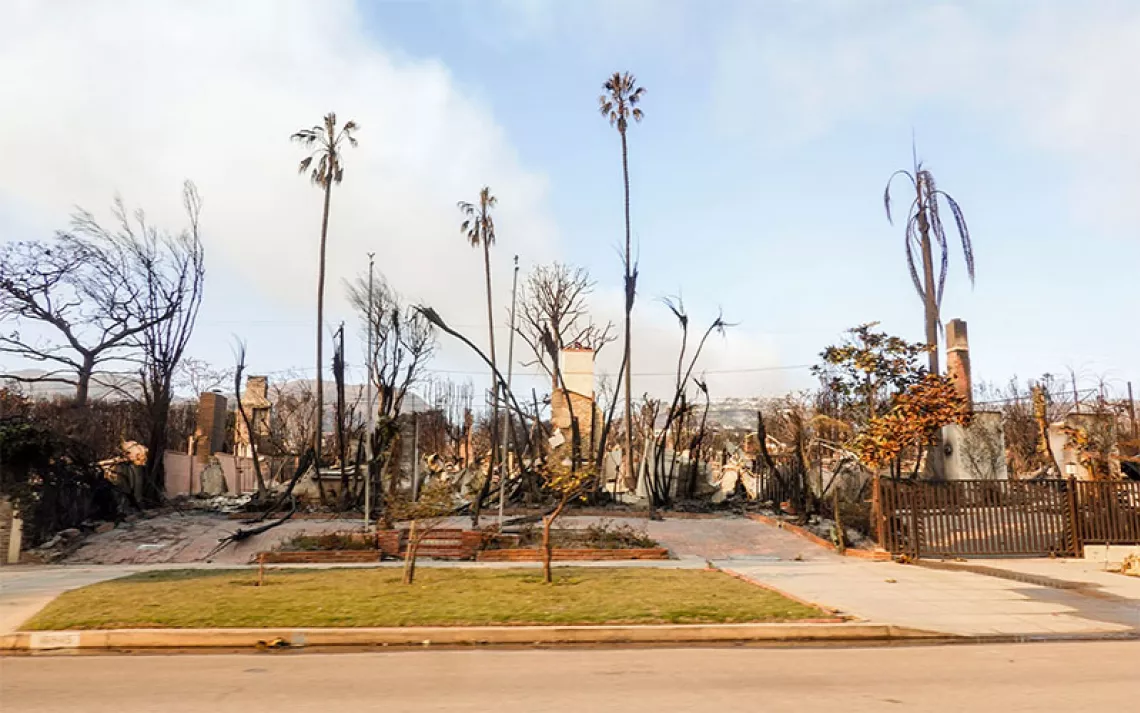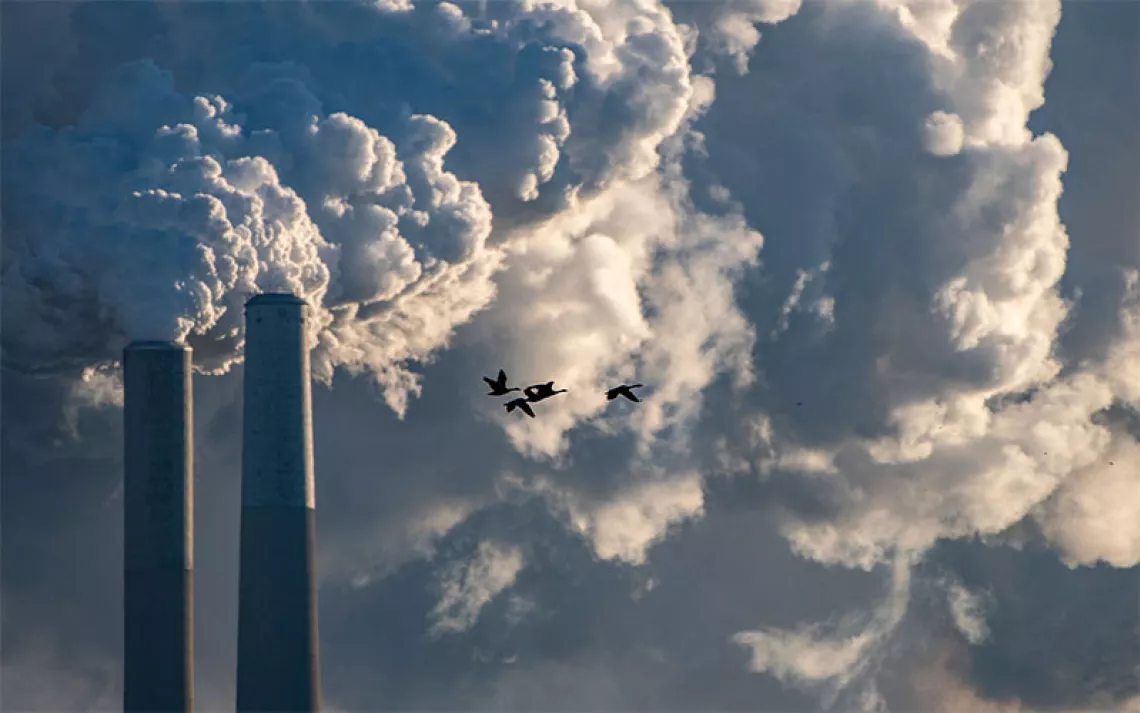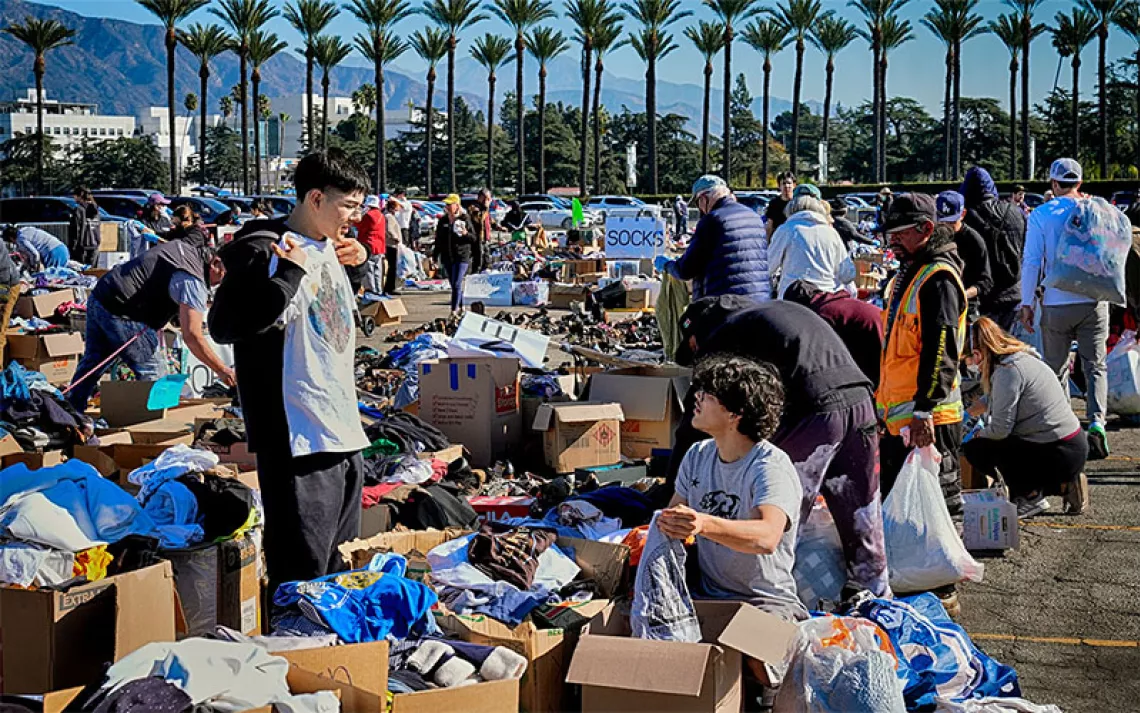No Community Is a Climate Refuge: A Reporter’s Notebook From Asheville, North Carolina
A celebrated “climate haven” proves there is no “away” on a changed planet
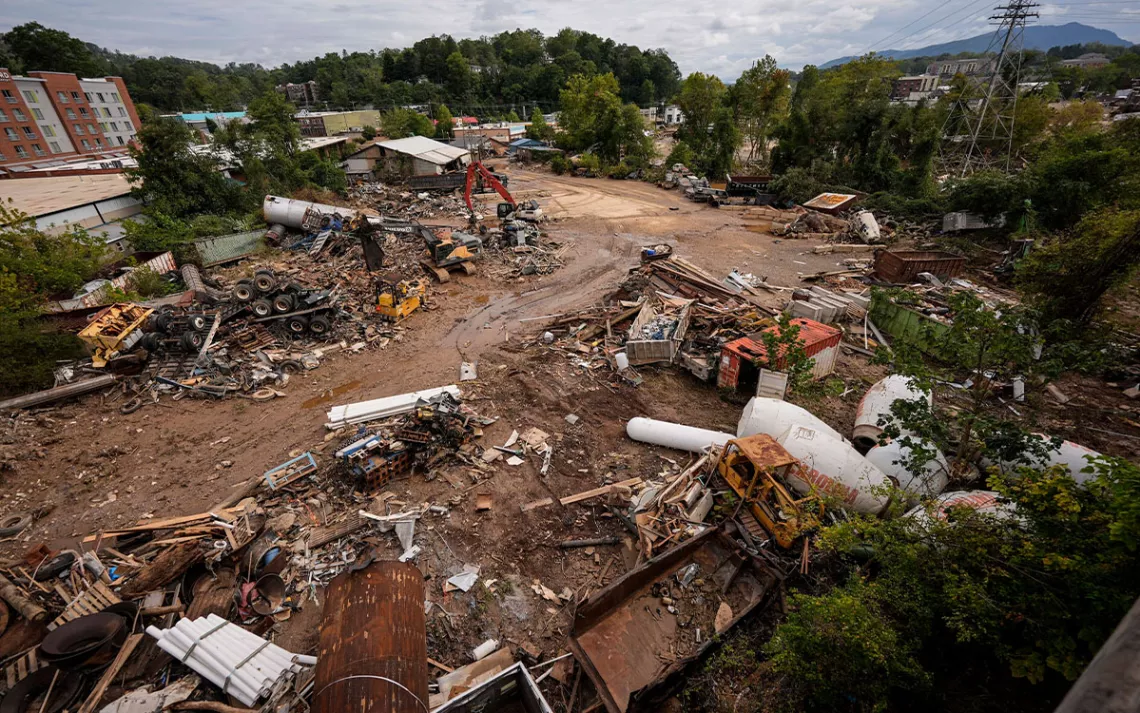
Debris in the aftermath of Hurricane Helene on September 30 in Asheville, North Carolina. | Photo by Mike Stewart/AP
It is profoundly disorienting to know that just two hours away from where I live in Asheville, North Carolina, people have unlimited access to the internet, phone service, running water, groceries, and electricity. They can find milk on their store shelves and pump gas without waiting in a line. Heck, their gas stations actually have gas—which is more than can be said for Asheville right now.
Being without many of these necessities is the reality here in the Blue Ridge Mountains since Hurricane Helene hit us over the weekend. Severe flooding washed away homes and businesses throughout western North Carolina, and downed trees are blocking in-town roads as well as major highways out of the region. More than 200 people in six states have been confirmed dead, and hundreds more remain missing. The damage will likely be in the tens of billions of dollars, making this one of the worst storms in US history.
Some folks are driving I-26 South, the one surefire way out, to Greenville, South Carolina. The rest of us—whether curtailed by finances or a fear of running out of gas during a departure—are staying put. We are left to bear witness to the devastation, and to help each other out as best we can.
I haven’t had internet at home since Friday. So I’ve only spent limited time on X, formerly known as Twitter, which is probably for the best for my mental health at the moment. According to some meathead, Helene hit Asheville so treacherously because it’s a “woke” city, because … tropical storms hate gender-neutral bathrooms now? But even with limited connectivity—the best places to get wi-fi are the public library branches, where hundreds gather outside to pick up a signal—many of us here have been able to tune into the national chatter expressing surprise that even a supposed “climate haven” like ours could be hit so hard by the tail end of a hurricane. We’re more than 300 miles from the coast, at 2,000 feet above sea level, yet this unnatural disaster walloped us anyway. Which just goes to show that when it comes to climate change, there is no away; no place is entirely safe and secure from the chaos our fossil fuel economy has unleashed.
Among those of us who live here, most of the talk is centered on complaints that Appalachia wasn’t better prepared for flooding of this magnitude. The power grid, the low-laying residential and commercial development, the patchy internet service—they’re all our own fault.
The truth is that no community is a climate refuge, despite what opportunistic real estate agents might say. Climate change has already impacted western North Carolina’s wildlife, water temperatures, and growing seasons. And while some of the more well-heeled “climate refugees” may not have noticed those impacts unless they looked closely, this catastrophic weather event is impossible to ignore.
Every region of the country, not just Appalachia, should be better prepared for climate-fueled disasters. There is, however, only so much that we can control. We are at the mercy of the state and federal governments to prioritize expanding broadband internet access, transitioning to renewable power sources, and becoming less dependent on gasoline for transportation. I’ve worked as a journalist for three and a half years here, and only now am I seeing this dependency so starkly.
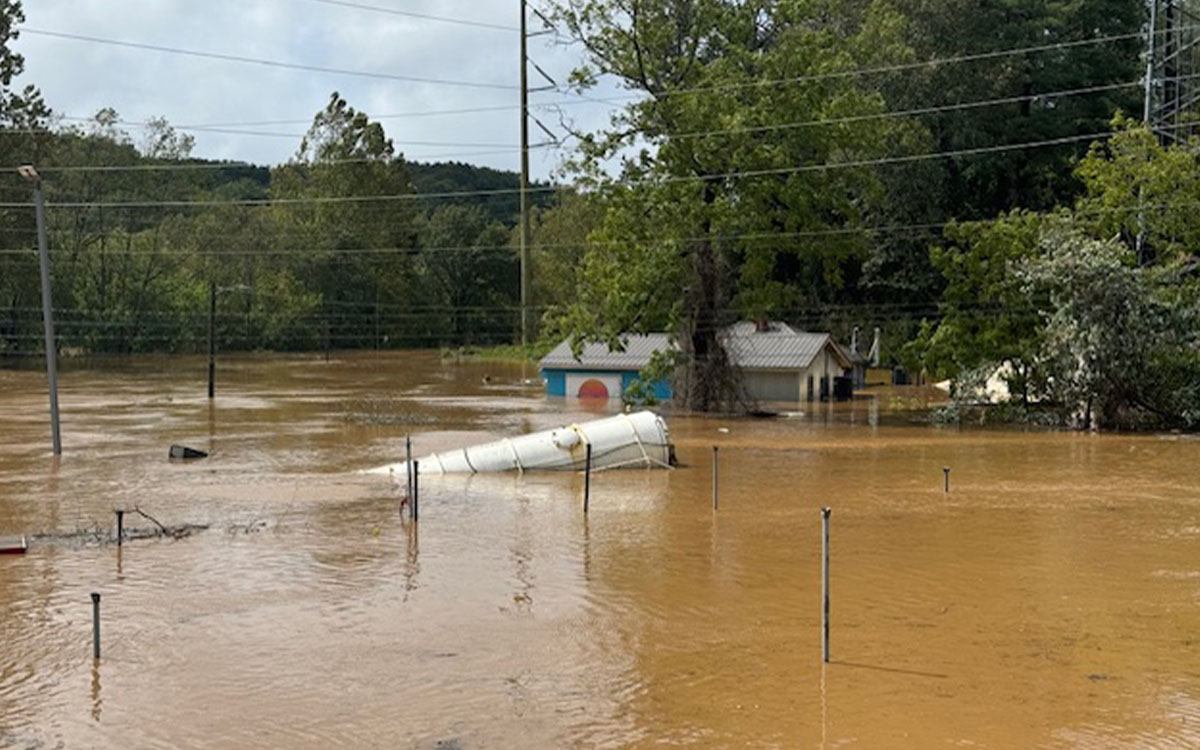
Boy Howdy burger joint. To the left is Carrier Park. | Photo by Jessica Wakeman
My husband and I are lucky, all things considered. We live in West Asheville, and we can see the French Broad River and Carrier Park, a public park that is now completely underwater, from our house atop a steep hill.
In the days before the storm hit, the county and city government warned there could be catastrophic flooding. But even my neighbors who are lifelong Asheville residents say the magnitude of the flooding is a shock. I’ve seen Carrier Park under two or three feet of water after previous heavy rainstorms, but on Friday and Saturday, the French Broad floodwaters rose above the stop sign at the bottom of our hill. The floodwaters breached the fence at one neighbor’s house, and I don’t think I’ll ever forget the sight of their hot tub floating around their yard like a rubber ducky in a little kid’s bathtub. On the opposite corner, other neighbors had to be evacuated from their second-floor window via kayak. I heard they left with their dog, two cats in carriers, and bottles of wine in hand.
The flood completely destroyed two businesses that opened on Amboy Road only a month ago—Boy Howdy, a burger joint, and DayTrip, a cocktail bar. Throughout the day on Friday, those who still had wi-fi watched the businesses’ owners update Instagram stories with videos and photos of the rising waters. At some point, one of DayTrip’s walls collapsed.
For me, the most unnerving sight from the flood was that of a large white tank floating in an intersection. My husband said it was an empty propane tank from the gas station on Amboy Road. I don’t know how he knew it was empty, or whether he was just saying that to reassure me. Even without unattached propane tanks in places they’re not supposed to be, the amount of stuff strewn across the area now that the water is receding is horrific. I’ve seen bottles, wooden pallets, kegs, furniture. A neighbor said he found a needle. (Western North Carolina has a pretty serious opioid problem.) Another jarring site was a shipping container swept down the French Broad River. It crashed into the railing of a bridge that had been 20 feet above water only a day before.
The cleanup in my neighborhood has started, but just a little. Right now, everything is coated in about two inches of malodorous mud.
The beautiful irony of this catastrophe is that as much as it brings one’s own basic needs into sharp focus, it’s spurring a mutual aid response. Among our neighbors and on my group chat of girlfriends around town, everyone announces what resources they have and posts offers to share: paper towels, toilet paper, episodes of The Office downloaded on a computer, bottled water for drinking, buckets of creek water for flushing. There has been a boil water advisory in effect since the weekend, and rumors are flying as to why that might be. It’s assumed that sewage and other gray water have infiltrated the city’s water system.
On Haywood Road, the main thoroughfare in West Asheville, people are leaving bottled water and groceries in piles for others to take. When my husband and I went to a bar called Cellarest on Monday morning to listen to the county press conference play on the radio, a local bakery dropped off dozens of free Danishes and tarts.
We lost power for six hours on Friday. Cell service and internet have been out at our house since then too. But having electricity has made this a more livable experience compared to what many of my friends are suffering. We’ve been encouraging less fortunate neighbors to charge their devices on our front porch. Other residents with power are making electricity available on card tables set up on their lawns and extension cords running into homes.
The big question in everyone’s mind is food. Western North Carolina is a pretty self-sufficient and crunchy community: There are lots of local farmers, and plenty of people grow at least some of their own food. But it’s unknown at the moment how many farms and gardens were ruined, and how long recovery could take. In the Asheville area, grocery stores have been opening one by one, with lines out front that reminded me of shopping during the early days of the pandemic. On Monday morning, my husband got me a jar of Nutella and a bag of M&M’s at Ingles, the regional grocery chain. I’ve never loved the man more.
Even as locals navigate the challenges of procuring food, water, and electricity, everyone is thinking about the longer-term issue of rebuilding. Asheville is tourism-based economy, as are surrounding towns like Black Mountain, Chimney Rock, and Hot Springs. Perhaps more than in most places, people’s livelihoods depend on restaurants and breweries, the music and arts scene, rock climbing and fly fishing and kayaking. In Asheville, the River Arts District—a former industrial district on the opposite side of the French Broad River that in recent decades has been given a second life by artists—is completely underwater. My favorite coffee shop, Summit Coffee, is destroyed. One friend who sells macrame jewelry and art weavings at galleries in the arts district assumes the flooding ruined all her inventory. Breweries have posted on Instagram that their tanks floated away or chill rooms are destroyed.
People are already worried about developers with deep pockets coming in for the rebuild. Will the flattened area be replaced by ever-more-sterile apartment developments and chain restaurants? Has the flood washed away the best parts of this beautiful region?
We know that eventually food will return to the store shelves and the water and electricity systems will come back online. But we wonder what will happen after the floodwaters recede and the mud is mopped up. What will be lost forever?
This article has been updated since its original publication to reflect the latest figures on death and destruction caused by Hurricane Helene.
 The Magazine of The Sierra Club
The Magazine of The Sierra Club
